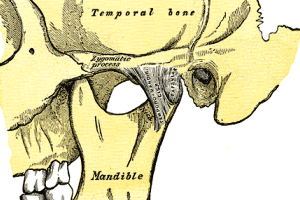 About TMJ Treatment
About TMJ Treatment
The group of underlying conditions that cause dysfunction, jaw pain, and discomfort of the jaw bone and muscles surrounding it is known as temporomandibular joint disorder or TMJ. Recent studies have concluded that over 10 million people within the United States suffer from jaw pain due to TMJ disorder. Researchers are continually seeking out more information as to its causes and potential treatments. However, researchers have found that more women suffer from TMJ pain than men. TMJ is also more likely to affect younger populations than the elderly.
Fortunately, temporomandibular joint disorder is very treatable. You should be aware of what is known to cause TMJ disorder and what options are treatment options are available.
What are the Causes and Symptoms of TMJ?
Because TMJ is a group of conditions affecting the jaw joint and muscles, it can be difficult to decipher the exact underlying cause of TMJ disorder; however, the most common catalyst to TMJ is trauma to the region of the jaw or the temporomandibular joint.
Some individuals may also have underlying disorders that cause pain in this area, including but not limited arthritis, shifts in hormone levels, oral infections as well as stress on the joint or surrounding areas.
Three Groups of TMJ
TMJ is typically broken down into three different groups: myosfascial pain, internal derangement of the joint, or degenerative/inflammatory disorders. The first includes general discomfort in or around the muscles that control the movement of the jaw, while the second can include a displaced disc or an injury to the condyle. The third group consists of disorders such as arthritis that have a tendency to affect the jaw joint.
Know the Pain
Temporomandibular joint disorder can cause radiating pain in the neck, the jaw or the face. Over time, TMJ may prevent the smooth movement of the jaw. Painful clicking may also be a symptom of TMJ disorder, as well as consistent or irregular stiffness of the jaw muscles. Some individuals may also experience a shift in the way upper and lower teeth come together, or a popping sound when the mouth closes.
How do you treat TMJ?
There are a wide range of TMJ treatment options, all depending on the severity of the discomfort, but most take a more conservative stance and are non-invasive in nature. Individuals can try to eat soft foods for a period of time to ease pain. Similarly, applying ice packs may work to relieve jaw pain. Trying to remember to close your mouth whenever possible would also be beneficial for some patients. Jaw stretching can provide some relief as well, typically in conjunction with reducing extreme jaw movements such as gum chewing or loud singing. Other forms of relaxation techniques may also help relieve pain.
Dentists may also suggest common over the counter pain medication to ease discomfort, including ibuprofen or other anti-inflammatory drugs. In some rare cases, dentists will use heavier pain relievers such as muscle relaxers or anti-depressants to reduce pain.
Other TMJ Treatment Considerations
When conservative measures do not help in TMJ treatment, some may turn to more extreme tactics. Doctors have used small doses of Botox for some patients’ TMJ treatment program, although the FDA has not yet approved it for these specific disorders. Surgery may be a consideration for those experiencing constant, debilitating pain; however, there are numerous risks involved and the procedures are irreversible. Finally, implants may also provide an avenue for temporomandibular joint disorder treatment by replacing jaw joints. However, there are risks inherent to surgery that more conservative methods do not carry.
If you are suffering from TMJ pain and are curious about your TMJ treatment options, know that you are not alone. It may be time to schedule a visit with your dentist. Reno Dental Associates will help you fully understand what may be causing your discomfort.
For treatment of your TMJ pain, contact us.